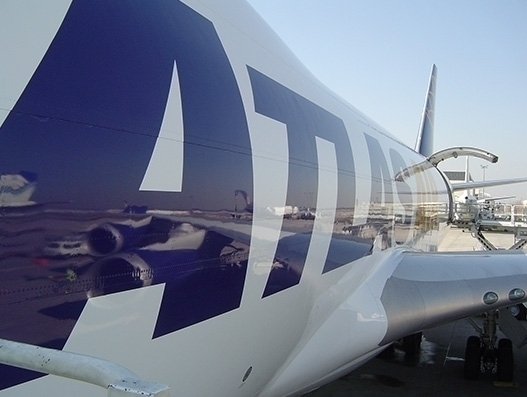
Tariffs and trade tensions impact Atlas Air’ Q2 results
Aug 2, 2019: Atlas Air Worldwide Holdings (AAWW), aircraft lessor and operator, has reported net income of $86.9 million, in its second quarter results announced yesterday. The company informed that its revenue in the reporting period was relatively in line with revenue in the second quarter of 2018. However, the company said that ‘the revenue […]

Aug 2, 2019: Atlas Air Worldwide Holdings (AAWW), aircraft lessor and operator, has reported net income of $86.9 million, in its second quarter results announced yesterday.
The company informed that its revenue in the reporting period was relatively in line with revenue in the second quarter of 2018.
However, the company said that ‘the revenue and earnings were below its expectations, as air cargo volumes and yields were affected in the near term by the widely reported impact of tariffs and trade tensions’.
For the second quarter of 2019, the company reported adjusted income totaled $4.5 million, compared with $49.7 million in the year-ago quarter and adjusted earnings before interest, tax, depreciation and amortization totaled $86.4 million compared with $125.5 million in the year-ago second quarter.
William J Flynn, chief executive officer said: “In addition, our results during the period were impacted by labor-related service disruptions. With manufacturers and shippers taking a wait-and-see approach regarding tariffs and trade issues during the course of the quarter, we experienced a softening in anticipated commercial cargo block hours and yields in our charter segment. On the military side of charter, our cargo hours were in line with our expectations for the quarter and were up from the first quarter of this year as we anticipated they would be, but passenger demand for the military was less than expected.”
Flynn added: “Although these factors are near-term headwinds for our industry, we are well-positioned and managing through them, and are maintaining our focus on our longer-term strategies and growth drivers.
“Our actions include ongoing continuous improvement initiatives designed to increase productivity, enhance efficiency, and grow the business. Additionally, we remain committed to negotiating a competitive collective bargaining agreement for our pilots. Our recent bargaining sessions have made progress, and we look forward to the upcoming scheduled sessions to continue that progress toward an agreement that all parties want.”
The increase in volume during the period reflected an increase in ACMI flying that was partially offset by a decrease in charter flying.
Increased ACMI segment revenue during the period reflected an increase in flying, partially offset by a decrease in the average rate per block hour.
The change in the average rate per block hour was primarily related to the growth in smaller-gauge 767 and 737 CMI flying.
However, the ACMI segment contribution decreased during the quarter as increased levels of flying were more than offset by higher crew costs, including enhanced wages and work rules resulting from our interim agreement with pilots at Southern Air additional heavy maintenance expense; and increased amortization of deferred maintenance costs, said the company.
In addition to these factors, start-up costs for customer-growth initiatives as well as labor-related service disruptions, also impacted ACMI segment contribution.
Lower charter segment revenue during the period was primarily driven by lower levels of flying and a decrease in average rate per block hour.
The decrease in block-hour volumes primarily reflected decline in cargo and passenger demand from the military, and lower cargo demand from commercial customers reflecting the impact of tariffs and global trade tensions.
Lower Charter segment contribution was driven by the decrease in commercial cargo yields and volumes related to the impact of tariffs and global trade tensions; a decrease in military cargo and passenger flying; and additional heavy maintenance expense. Results were also affected by labor-related service disruptions.
In dry leasing, higher segment revenue reflected the placement of additional 767-300 converted freighter aircraft throughout 2018, as well as the placement of one 777-200 freighter in July 2018, partially offset by the scheduled return of a 777-200 freighter in March 2019 that is awaiting placement with a customer.
Lower segment contribution was primarily due to the scheduled return of that 777-200 freighter in March 2019, partially offset by the placement of additional aircraft.

